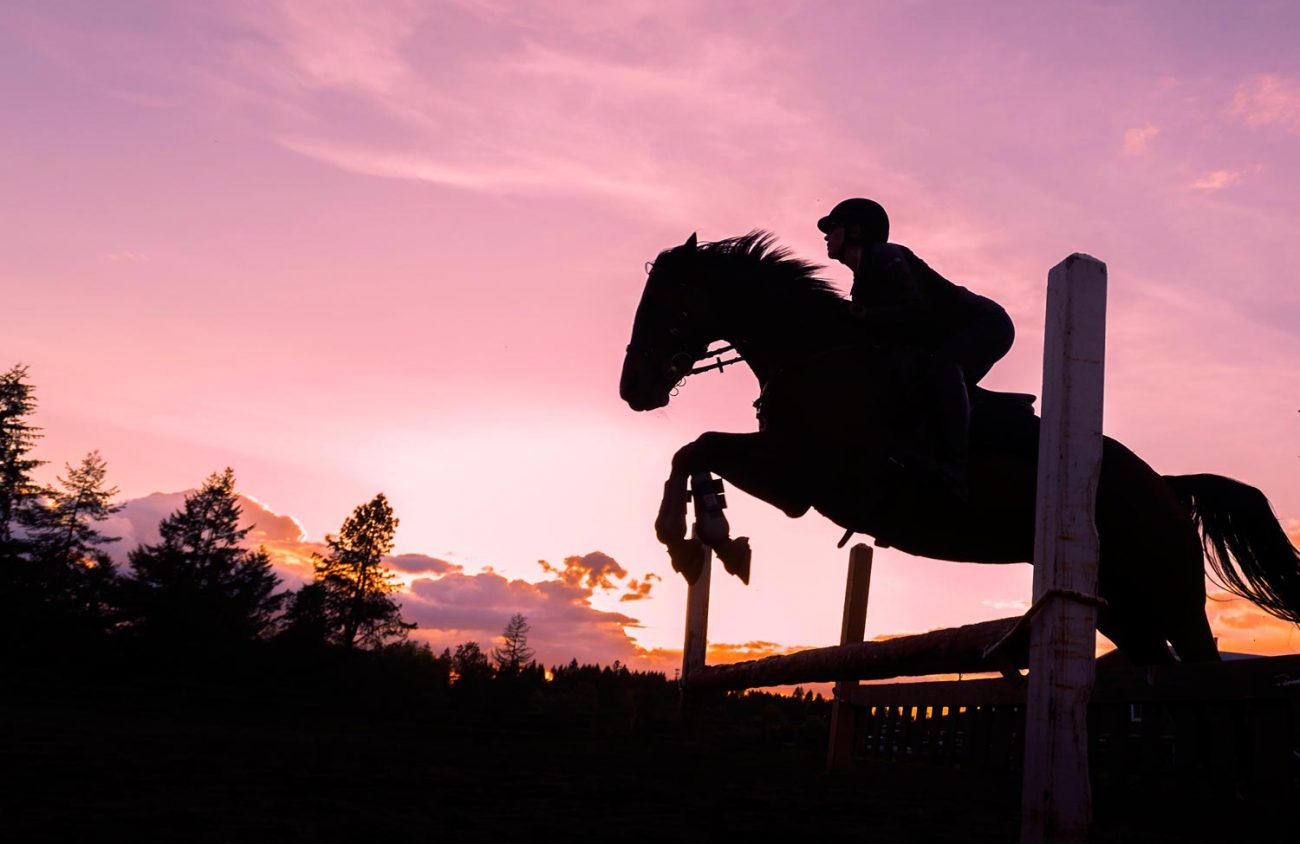We burst out of the trees, gallop up to a log and jump into a pond of water, then we leap up over the bank before hurtling on to the next obstacle. My horse, Queen of Cairo, flicks her small brown ears back at me, then pricks them forward as she hunts for the next jump.
When I tell people my hobby is competing my horse, I think they picture suit-jacketed velvet-capped champagne-sipping equestrians cantering across manicured lawns.
But when we are talking about the sport of three-day eventing, it’s more like adrenaline junkies wearing helmets and flak jackets.
I’ve been eventing for about seven years, and this past summer Cairo and I moved up to a level called preliminary which, despite its name, is fairly advanced. We’ve set our sights on competing at the internationally recognized level known as the Fédération Equestre Internationale, aka the FEI.
It’s a pretty big move for an adult amateur on a little brown horse to move to the FEI one-star level, but why not dream? Rolex Kentucky is the most difficult event in the country, and is run at the FEI four-star level.
Three-day eventing, known also as horse trials, is basically a triathlon of horse and rider. On the first day, we compete in dressage — like figure skating but instead of ice you’re on a one-ton animal with a mind of its own.
Judges evaluate horse and rider on their execution of movements, from basic circles to more complex maneuvers that look like dancing. Dressage is Cairo and my weakest link. The goals of dressage include elegance and submission. Picture horses trip-trotting around like four-legged ballet dancers, and Cairo and me doing a Lone Ranger impersonation. You get the idea.
After dressage, we are usually hovering near the bottom of the placings. A good score is in the 20s. Cairo and I tend to see numbers in the low 40s. The lower the score, the better. At my last event, and our first go at prelim, our dressage performance left Cairo and me in third to last place.
Day two is cross-country, which means charging balls-to-the-wall through the woods and across fields; leaping logs, tables and ditches is more Cairo’s and my style. For cross-country, I suit Cairo up in protective boots. I wear not only my helmet, but an armored vest.
Prelim fences are 3 feet 7 inches tall, and some fences can be 4 feet 7 inches wide.
Riders are scored on timing and clean rounds — you want to make it over all the obstacles in the right order in the time allowed. Judges dock you 20 points for every fence the horse refuses to clear. Fall off and you’re disqualified.
Each fence is marked with a white flag on the left and a red one on the right. Eventing’s unofficial motto is “red on the right, white on the left, insanity in the middle.”
And it’s not just me who’s a little insane. Marlena Kelly, who owns Fernbrook Stables near Junction City, says she started off riding Western but “there wasn’t enough adrenaline involved in going in a circle on a horse as slow as you can while dressed like Elvis in a cowboy hat shaped like a taco. I needed something that made me feel scared enough to make me want to puke, so eventing seemed logical.”
And Amanda Davis, who keeps her horse Sara in Pleasant Hill, tells me, “I event because I’m a little bit of an adrenaline junkie, and it gets my heart pumping!” Davis recently broke her hand when Sara threw a spirited buck after a fence. Davis is champing at the bit to get the all clear from her doctor to get back on a horse.
For those who’d rather watch than risk broken bones: Inavale Farm in Corvallis is the location of Oregon’s only recognized horse trials, and the competition allows spectators to watch standing in the field as horses and riders gallop by.
Cairo is crazy-good at cross-country. And when I say crazy-good, it’s with the caveat that I’ve heard people say, “Wow, that horse is really talented but she looks crazy and I sure wouldn’t ride her,” as we fly by.
When heading toward the start box, I’m often queasy, wondering why in the world I would sign up for this. The moment the timer starts, however, all I can feel is Cairo’s intense desire to “jump all the things” and we are off.
Cairo’s talent for springing over large immobile objects means that by the end of cross-country day, we often move up from nearly last to more the middle of the pack, because other riders have racked up 20-point refusals and penalties for going too slow, or sometimes they fall off.
The third event is stadium jumping. The horse and rider team jump a course of brightly colored fences made up of poles that do fall down if you hit them. If you knock a rail, it’s four points added to your score. It checks your horse’s dexterity to turn and jump carefully in the same short time period you’ve asked the animal to gallop and jump fearlessly at speed.
Clair Barnett, a nurse in Lebanon, Oregon, who competes at prelim with me, is also looking to move to one-star level. She sums up eventing beautifully when she says she does it “because no other sport combines self control, precision and bravery while having to rely on a 1,300 pound free-thinking foreign-speaking teammate.” She adds, “It’s the ultimate high with deepest love and the strongest bond.”
At our first go at prelim, Cairo and I finished with no points added in cross country and only one rail in stadium, bringing us from third to last to a pink fifth place ribbon — not bad for our first time out! Now we are just waiting for the rain to stop so we can hit the cross-country again.
